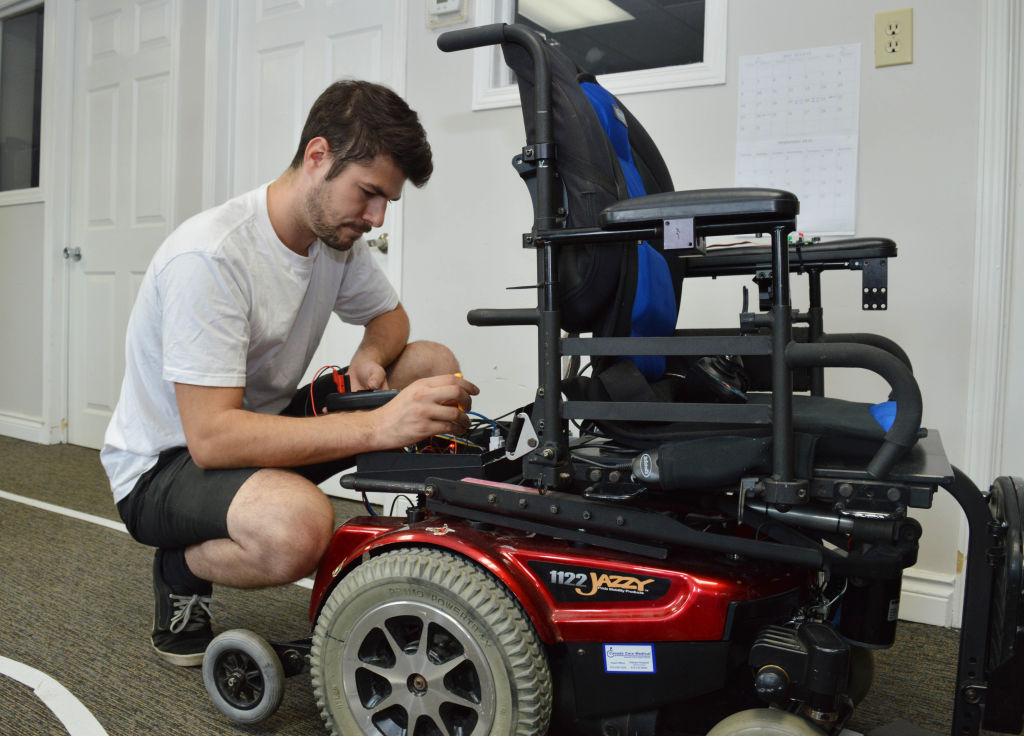
Ten years ago, computer engineer Ke Wang’s life was changed forever when an SUV hit him as he stood at a bus stop. After rounds of physiotherapy and building a house to accommodate his wheelchair, Wang’s energy lags and he is effectively retired. But he hasn’t let his injuries stop him.
Today he and a team of Algonquin robotics graduates are building a semi-autonomous wheelchair they hope will bring back independence to Wang and other wheelchair users.
Wang can go just about wherever he wants in his wheelchair. But once he’s away from it, in bed or in the shower, he becomes reliant on other people.
“He has to wait for his wife to bring him his chair,” said Tony Awad, an electro-mechanical engineering technician – robotics graduate who is now part of Wang’s company.
To solve this problem, SmartChair is controlled by a smartphone app instead of a conventional joystick. The app lets users move their wheelchair with the brush of a finger, even when they’re away from it.
This easy activation would put people who can’t grip a joystick, and consequently have to hire someone to move their chair, back in the driver’s seat. The chair even performs some tasks on its own, such as following lines on the floor or loading itself into a van.
Wang started writing the software in May of 2013 and his friend Rob Dotten hacked into the chair’s controls. A year later, Awad took Dotten’s place, and was later joined by fellow robotics student Javier Garcia.
“Summer was in, we had nothing to do, what better way to keep our minds working than to build this?” said Awad.
In September 2014, Awad convinced classmates Benoît Côté and Mark Gifford to make SmartChair their third-year robotics project September 2014. Initially the chair lagged behind the commands and jolted forward, but after eight months the team ironed out the kinks
“I trust people to sit in it,” said Garcia.
In August the team took SmartChair to Toronto’s Accessibility Innovation Showcase where they were one of the five finalists in the pitch competition.
“We had really good positive feedback,” said Wang. “We had people who came up to us and asked if we could install it in their home.”
He predicts the chair will be ready to test at the University of Ottawa’s rehabilitation centre in the next three months.
“We’ll take the prototype into the rehab centre and do clinical testing on their patients,” said Wang.
The end goal is to make a system that can be plugged into any existing power wheelchair. Once the chair is field tested and certified, they’ll find industry partners that already sell wheelchairs to produce and repair their technology.
Of course, the ultimate goal is for Wang to use the chair at home.
“A product like that, it’s something I can use,” he said.


